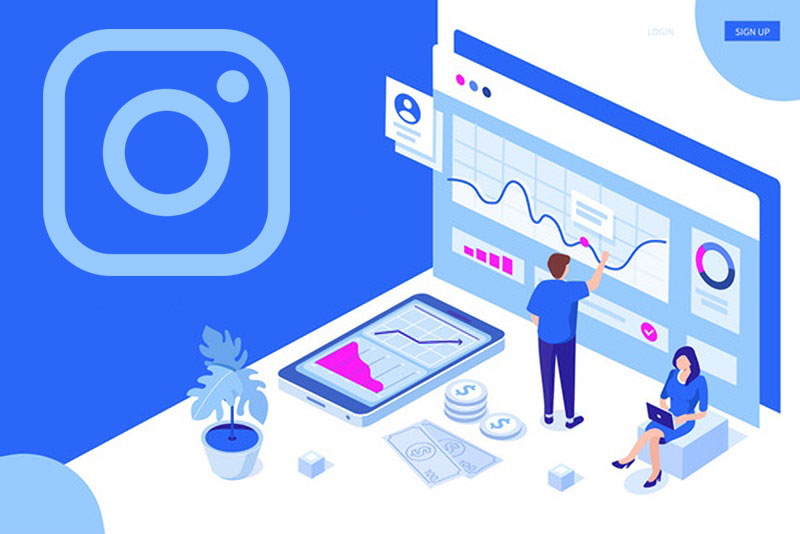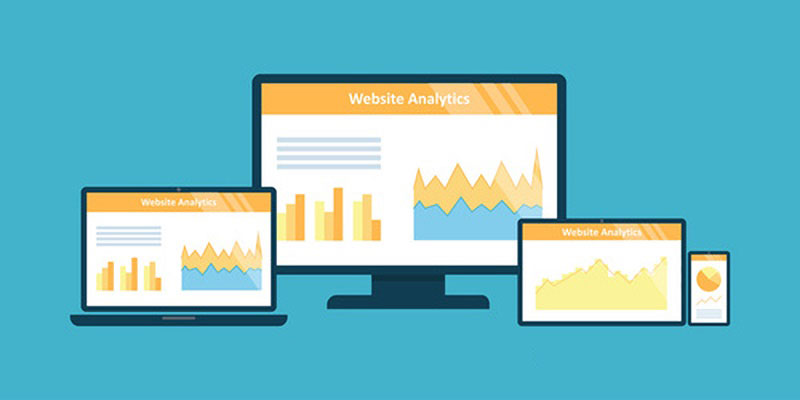7 Instagram Business Metrics to Track

This social network can be a great place to market your business, but you need to know what Instagram metrics for business to follow.
Instagram analytics tools can help you plan content and future campaigns and achieve your social media goals. These objectives must be specific, achievable, relevant and timely. They should also be measurable. This tells you where your efforts are paying and where they are not.
Under all the Instagram photos, there is a data mine. You can bet your competitors are using this information. Should not you be?
In this publication, we’ll cover 7 Instagram metrics for business to track measure performance (and improve ROI). If you are not already a user very accustomed to the business-focused tool, read our Instagram marketing post for your business: first steps.
Benefits of tracking metrics in Instagram for business.
Learn more about your audience. Instagram analyzes the demographics of the follower according to gender, age, location, and language. Depending on the tool, you can also track interests and shopping behavior online. With this information, you can create a presence that creates a conversation with your followers on this platform. Your Instagram fans may be different from other social networks.
Measure your success and improve your Instagram followers
Strategy. Instagram already provides straightforward, easy-to-analyze engagement numbers, including tastings, mentions, and comments. Keeping track of the right Instagram metrics allows you to see these numbers over time. By comparing the time periods, you can chart the growth, determine the best time to post and see what kind of content gets the most response. Do people’s photos work better than graphics? What filters because more shares?
See how your Instagram promoted posts are performing. Do your promoted Instagram posts get the appropriate return on investment? Google Analytics lets you compare organic and promoted impressions. This gives a sense of how far your ads on Instagram are expanding their reach.
Helps to set goals and objectives. By revealing the weak areas in your account, the analysis details the problem areas. Identifying goals and objectives becomes easier.
Better divide resources. Consider the costs of social media. Work, training, and development are among the costs of social media. As well as technology, agencies, and consultants. Keeping track of Instagram metrics helps reduce waste by showing which areas are most in need of attention.
Plan campaigns. The information such as which hashtags to use and who are the main influencers in your field is crucial. Your next big social media campaign depends on that knowledge. With this, the success of the campaign becomes a science, not an accident.
Gain a competitive advantage. Analysis of the right Instagram metrics shows what others in your field are doing, right or wrong.
Measuring success – 7 Instagram metrics for business to track.
Metrics can be divided into two types. Account metrics provide a record of your Instagram’s activity over time; individual metrics keep you up to date on each publication. These data can guide you towards the goals of the campaign – that is, reaching more of your followers, increasing your engagement rate.
1) Followers growth rate:

Its growth rate of followers, on the other hand, gives a good idea of whether your business is expanding its reach and catching the attention of new people. In other words, the way your follower count changes is more important than your actual number of followers.
For example, suppose you get 50 new followers in a month. If you started with 500 followers that means your growth rate was 10%, which is great. Such a number is a sure sign that your business reach is growing rapidly. If you started with 5000 followers, however, your follower growth rate would be only 1%, which could indicate that Instagram marketing is stagnating.
Determining your follower growth rate is simple. Get the number of followers you’ve won in the last month. Divide this number by the number of followers you had at the beginning of the month. For example, if you gained 90 followers this month and had 1500 followers earlier in the month, your follower growth rate in the month was 90/1500 = 0.06 or 6%.
2) Follower engagement:
When it comes to your audience on Instagram, quality hits the quantity.
It’s better to have a small audience, but highly involved, than a large audience that does not pay attention to anything you post. Tracking your work by follower allows you to monitor how much he or she is interested.
Just like with follower count and growth rate, one of Instagram’s business metrics to keep track of is to compare the number of tastings and comments you get with the size of your audience. For example, suppose your average post has 10 tans. That means one thing if you have 100 followers, but something quite different if you have 1000. Many smaller brands get less tanned and comment on each post than the big companies, but their audience is still more involved (and therefore, quality).
You can calculate your work by follower monthly or weekly. Do not try to calculate it on a daily basis, since normal day-to-day fluctuations are likely to discard your data. Look at the total number of tastes and comments you’ve had over a specific period of time, and then divide that number by the number of followers you’ve had during that time period. For example, if you got 78 comments and comments last week and you had 600 followers, your follower engagement rate was 13% on the week.
3) Comments per post:
Tanned on Instagram are gratifying, but they are not worth as much as the comments. Just a second to touch the “enjoy” button, but typing in a comment takes time and thought. When someone leaves a comment, it shows that you have really attracted their interest and are connected with them in some way.
So the number of comments you get is an important metric to track. Stay tuned for your average and see if it goes up or down. For example, if you got an average of five comments per post six months ago, and you get an average of right now, you’re doing something right in terms of connecting with your audience. If your average number of comments disappears, try to find out why your audience is less involved than it used to be.
It’s also a good idea to see which of your individual posts have more comments. See if a pattern emerges over time. For example, if your audience is very fond of a particular type of product photo, create more posts like this to keep engagement high.
4) Clicks on the links:

Like other social media channels, Instagram can be a powerful channel of traffic to your site.
However, Instagram is more limiting in the direction of traffic to your website since it only allows you to have a clickable link in your bio. All links that you include in your posts should be copied and pasted by your audience. This makes it difficult to know how much of your web traffic is from Instagram.
Only Instagram business accounts with over 10,000 followers that can add links in stories.
With additional links available in Instagram’s stories, it adds more opportunities to drive traffic to your site via Instagram. But what updates and stories drive traffic to your site? And what ultimately led to conversions on the site?
You can take your Instagram analysis to the next level when you create URLs with UTM parameters that tell your analytics platform where a particular visitor came from. UTM parameters are basically informational tags that you attach to your normal URL.
5) Hashtags with more engagement:
Using hashtags well is an essential part of success on Instagram. Hashtags allow you to categorize your posts, and they help people find you.
Over time, you’ll probably find that some of your hashtags are improving better than others. Tracing your hashtags lets you know which terms are most popular and those that you gain the most engagement. It also allows you to see which hashtags your audience does not love so much, so you can reduce their use of them.
6) Engaging Instagram Stories:
Instagram stories – which can be video or photos – are a bit different from normal content because they disappear after 24 hours. This gives you some extra freedom to try out different or experimental marketing ideas, but it also makes the feature a little difficult to track. Platforms outside of Instagram currently do not support analysis for content that expires, but you can still track that metric with Instagram’s native analysis tool, called Insights.

You will need a business account on Instagram to access Insights. Creating one is easy. Go to Settings, and you’ll see an option called “Switch to Business Profile”.
After that, you’ll be prompted to enter information about your company.
Once you’ve set up your business profile, you’ll be able to access data about your stories in Insights. There are two main things you should pay attention to reach and exit. Its reach tells you how many unique viewers have seen your story; the more you are on Instagram and the more followers you get, the more your reach will increase. Their outputs indicate which people passed the next profile when they were viewing your story. Exits are a good way to see what holds your audience’s interest and what not. If you notice many exits on a particular slide, try to find out why so many people have lost interest at that point.
7) Best places and times:
Time is important in social networks. If you want your content to be viewed, you must submit updates when your audience is online.
If you have a business profile, Instagram provides a lot of information about your followers’ locations and current times. You can see the cities and countries where most of your followers are located, as well as the days of the week and time of day when your followers are most active. Pay attention to the patterns in the data and schedule new posts for times when your followers are online – it’s an easy way to get more engaged without doing anything differently.
Learning.
Instagram can be a great place to market your business. It’s fun; it gives you an artistic vein and allows you to connect with your audience. However, keep in mind that if you want your Instagram marketing to be profitable and fun, you should follow the right metrics regularly. Focus on these seven things and you will get a clearer picture of how your current strategy is being pursued, as well as some ideas on how to improve.
Photos courtesy of us.fotolia.com




Leave a Reply